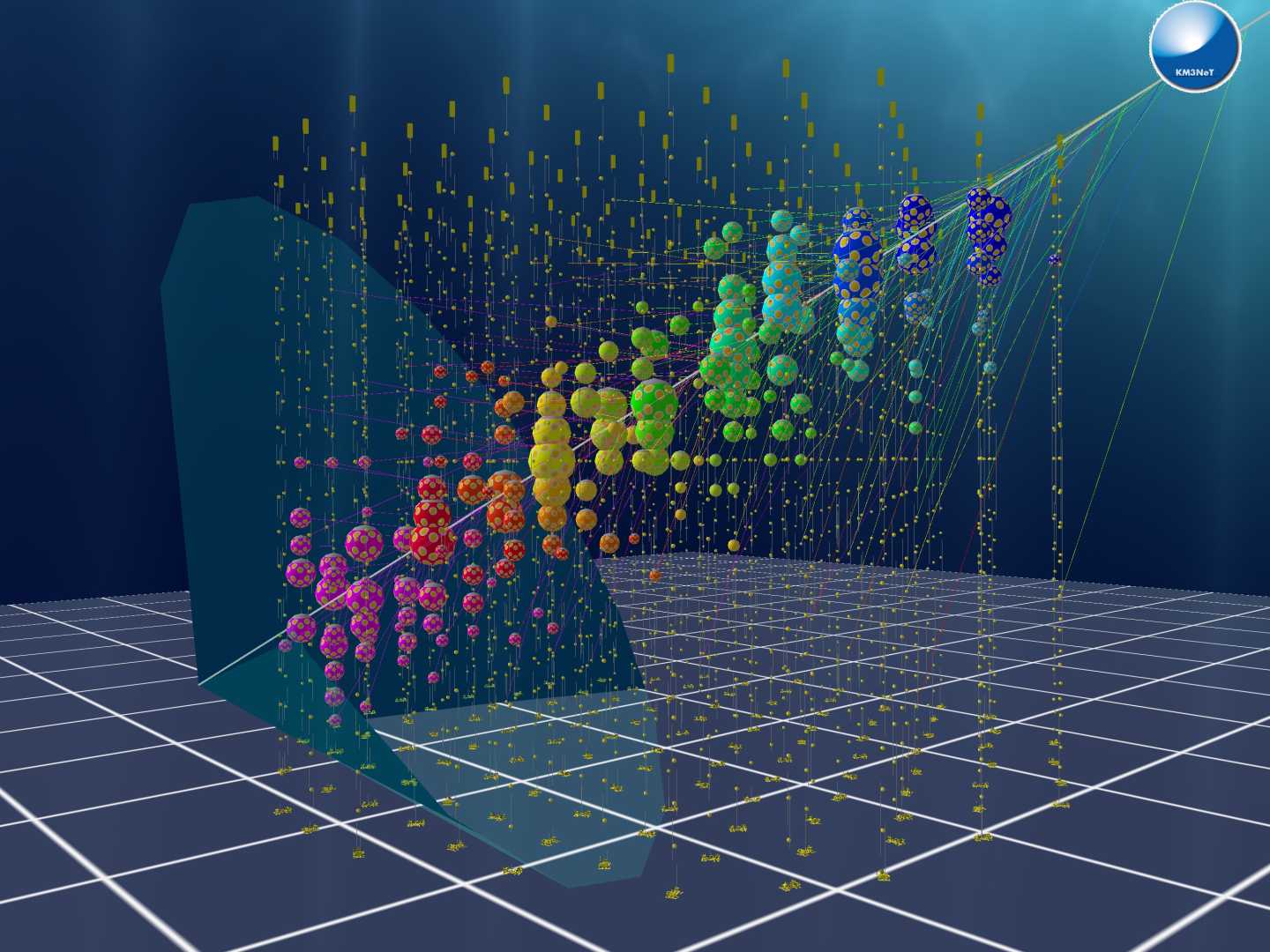Historic Detection of Ultra-High-Energy Neutrino By KM3NeT

SIcily, Italy — An ultra-high-energy neutrino was detected by the KM3NeT’s ARCA detector on February 13, 2023. This groundbreaking event, dubbed KM3-230213A, is the most energetic neutrino ever recorded, estimated to have an energy of approximately 220 peta-electron volts (PeV), or 220 million billion electron volts. This discovery marks a significant milestone in the study of neutrinos, offering the first solid evidence that such high-energy neutrinos are produced in the universe.
The international scientific collaboration of KM3NeT announced this finding in a recent article in the journal Nature. The detected neutrino was identified via a single muon, which passed through the detector and triggered signals in more than one-third of the active sensors within the KM3NeT infrastructure, comprising two main detectors: ARCA and ORCA. The trajectory of the muon combined with its extraordinary energy suggests it originated from a cosmic neutrino interacting nearby.
“KM3NeT has begun to probe a range of energy and sensitivity where detected neutrinos may originate from extreme astrophysical phenomena,” said Paschal Coyle, KM3NeT spokesperson and researcher at CNRS in Marseille, France. “This first-ever detection of a neutrino of hundreds of PeV opens a new chapter in neutrino astronomy.”
The detection of such a high-energy neutrino is pivotal since these cosmic neutrinos are believed to be generated by powerful phenomena such as supernova explosions, gamma-ray bursts, and the energetic surroundings of supermassive black holes.
Neutrinos, which are one of the most abundant particles in the universe, possess no electric charge, have minimal mass, and interact very weakly with other matter. This unique nature makes them challenging to detect, necessitating large detectors like KM3NeT, which is currently being constructed in the Mediterranean Sea.
“High-energy neutrinos like this are extremely rare, making this a monumental discovery,” commented Professor Miroslav Filipovic of Western Sydney University. “The discovery represents the most energetic neutrino ever observed, and provides evidence that neutrinos of such high energies are produced in the Universe.”
During the detection process, KM3NeT researchers utilized photomultiplier tubes to measure light emissions from particles generated when neutrinos interacted with atoms within the detector. The event recorded over 28,000 photons of light and demonstrated the potential of KM3NeT to advance the understanding of neutrino sources.
“This remarkable detection was achieved with only one-tenth of the final configuration of the detector, demonstrating the great potential of our experiment for neutrino studies,” said Aart Heijboer, KM3NeT Physics and Software Manager, emphasizing the facility’s capability to detect such events.
The KM3NeT detectors are anchored to the seabed at depths of up to 3,450 meters, approximately 80 kilometers from Sicily‘s coast. Each detection unit operates with digital optical modules that capture the faint light signals produced from neutrino interactions, and this infrastructure is expected to expand significantly with more detection units in the future.
Future research will aim to detect additional events like KM3-230213A to elucidate the cosmic origins of these ultra-high-energy neutrinos. As KM3NeT’s capabilities continue to grow, it is set to become a leading contributor to multi-messenger astronomy, which combines different astrophysical data sources to enhance the understanding of cosmic phenomena.
